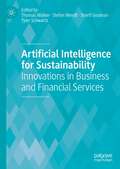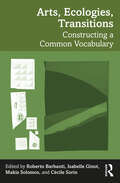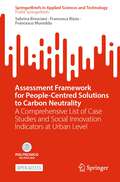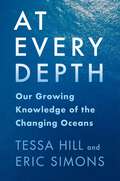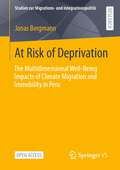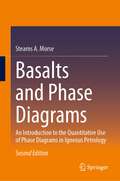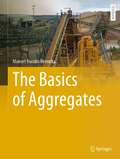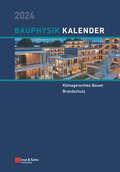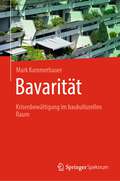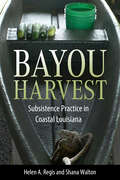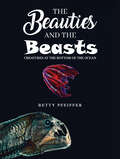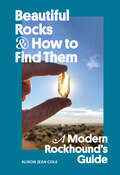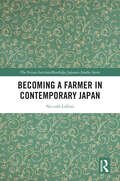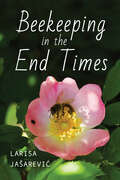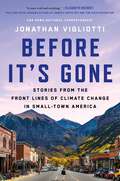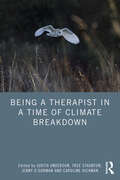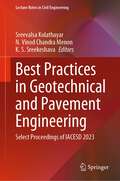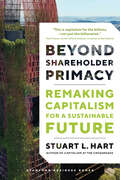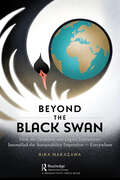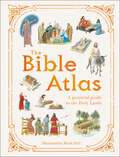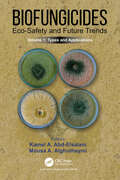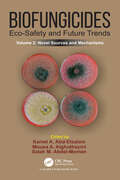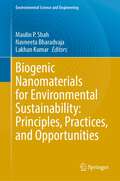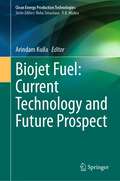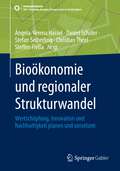- Table View
- List View
Artificial Intelligence for Sustainability: Innovations in Business and Financial Services
by Thomas Walker Stefan Wendt Sherif Goubran Tyler SchwartzIn light of the climate crisis, businesses are expected to embrace sustainability to reduce their negative impacts on the environment and society, while at the same time strengthening their organisations’ positive impacts. Managing this alongside the traditional requirements of business requires careful handling, and it is small wonder that some are heralding the advantages posed by artificial intelligence (AI) as the missing piece of the puzzle. This edited book aims to present a balanced discussion of the benefits and costs of using AI for the natural environment and society, including an analysis of its potential to help meet the UN’s Agenda 2030 and the Sustainable Development Goals. Researchers, practitioners, regulators, and entrepreneurs at the forefront of sustainable AI solutions share insights into the different sustainable applications of AI and highlight how these new developments may affect and contribute to our fight against climate change and address further environmental and social challenges. This volume will be of great interest to scholars and students of digital business and new technologies, sustainability, and strategy.
Arts, Ecologies, Transitions: Constructing a Common Vocabulary
by Roberto Barbanti Isabelle Ginot Makis Solomos Cécile SorinArts, Ecologies, Transitions provides in-depth insights into how aesthetic relations and current artistic practices are fundamentally ecological and intrinsically connected to the world. As art is created in a given historic temporality, it presents specific modalities of productive and sensory relations to the world. With contributions from 49 researchers, this book tracks evolutions in the arts that demonstrate an awareness of the environmental, economic, social, and political crises. It proposes interdisciplinary approaches to art that clarify the multiple relationships between art and ecology through an exploration of key concepts such as collapsonauts, degrowth, place, recycling, and walking art. All the artistic fields are addressed from the visual arts, theatre, dance, music and sound art, cinema, and photography – including those that are rarely represented in research such as digital creation or graphic design – to showcase the diversity of artistic practices in transition.Through original research this book presents ideas in an accessible format and will be of interest to students and researchers in the fields of environmental studies, ecology, geography, cultural studies, architecture, performance studies, visual arts, cinema, music, and literature studies.
Assessment Framework for People-Centred Solutions to Carbon Neutrality: A Comprehensive List of Case Studies and Social Innovation Indicators at Urban Level (SpringerBriefs in Applied Sciences and Technology)
by Sabrina Bresciani Francesca Rizzo Francesco MuredduThis open access book presents a catalogue of over one thousand indicators which can be used by cities' public administrators to monitor and evaluate social innovation action plans to support people-centred, collaborative or co-designed solutions to lower carbon emissions. Indicators are clustered according to a framework of social innovation solutions for climate neutrality at city level, developed by merging top-down academic knowledge with bottom-up pragmatic case studies. There is currently limited guidance on how to embed social innovations in their cities’ action plans with the aim of reaching climate neutrality, and on how to assess the progress and impacts of such people-centred projects in cities. The book addresses this gap and is thus relevant for scholars in the field of policy-making and design, as well as cities’ transition teams, policymakers and consultants. Based on the work developed within the EU-funded project NetZeroCities, intervention logics are provided for each of the ten categories of action, with related indicators clustered by category and evaluation criteria (effectiveness, efficiency, relevance, replicability, and scalability). Guidelines to implement the framework support city administrators in defining steps they need to follow to apply the indicators to their local case, making social innovation a crucial lever for accelerating systemic transformation.
At Every Depth: Our Growing Knowledge of the Changing Oceans
by Tessa Hill Eric SimonsThe world’s oceans are changing at a drastic pace. Beneath the waves and along the coasts, climate change and environmental degradation have spurred the most radical transformations in human history. In response, the people who know the ocean most intimately are taking action for the sake of our shared future. Community scientists track species in California tidepools. Researchers dive into the waters around Sydney to replant kelp forests. Scientists and First Nations communities collaborate to restore clam gardens in the Pacific Northwest.In At Every Depth, the oceanographer Tessa Hill and the science journalist Eric Simons profile these and other efforts to understand and protect marine environments, taking readers to habitats from shallow tidepools to the deep sea. They delve into the many human connections to the ocean—how people live with and make their living from the waters—journeying to places as far-flung as coral reefs, the Great Pacific Garbage Patch, and the Arctic and Antarctic poles. At Every Depth shares the stories of people from all walks of life, including scientists, coastal community members, Indigenous people, shellfish farmers, and fisheries workers. It brings together varied viewpoints, showing how scientists’ research and local and Indigenous knowledge can complement each other to inform a more sustainable future. Poignantly written and grounded in science, this book offers a narrative perspective on the changing oceans, letting us see how our relationships to the oceans are changing too.
At Risk of Deprivation: The Multidimensional Well-Being Impacts of Climate Migration and Immobility in Peru (Studien zur Migrations- und Integrationspolitik)
by Jonas BergmannThis open access book examines how and why various forms of climate (im)mobilities can impact people's objective and subjective well-being. Worsening climate impacts are forcing subsistence farmers worldwide to decide between staying or leaving their homes. This mixed methods study analyzes cases of climate-related migration, displacement, relocation, and immobility in Peru's coastal, highland, and rainforest regions. The results reveal that numerous farmers experienced profound and often negative well-being impacts, regardless of whether they stayed or migrated. The higher the structural constraints, such as weak governance, and the more damaging the climate impacts were, the higher the risk of well-being declines. Additionally, the affected individuals often had limited agency and ability to mitigate losses. These findings challenge the notion of "migration as adaptation" and emphasize the importance of safeguarding the human rights and security of those affected while addressing loss and damage. Without significant investments in such efforts, climate impacts could sharply diminish the well-being of numerous subsistence farmers worldwide—irrespective of whether they stay or migrate.
Basalts and Phase Diagrams: An Introduction to the Quantitative Use of Phase Diagrams in Igneous Petrology
by Stearns A. MorseIn this newly revised and expanded edition the reader finds both an introduction to igneous petrology and an exposition of the quantitative use of phase diagrams in understanding the origin and crystallization history of basic magmas. The book provides a step-by- step analysis of crystallization and melting in a limited number of geologically significant phase diagrams. The limiting processes of fractional and equilibrium melting and fractional and equilibrium crystallization are rigorously examined. Examples of the use of phase diagrams are drawn from the literature of layered intrusions, redox equilibria in iron-bearing systems, and the high pressure equilibria of melting in the mantle.
The Basics of Aggregates (Springer Textbooks in Earth Sciences, Geography and Environment)
by Manuel Bustillo RevueltaAggregates are among the most common natural resource used in everyday's life, having enhanced life quality. They are essential for construction, being utilized in nearly all residential, commercial, and industrial building construction and most public work projects such as roads, highways and bridges, railroad beds, dams, airports, tunnels, and many others. In the future, the rebuilding of deteriorated roads, highways, bridges, airports, seaports, and private and public buildings will require vast amounts of aggregate. Although it is almost impracticable to know the total amount of aggregates extracted every year globally, it is roughly estimated that annual aggregate production totals about 25 billion tons. Both developed and developing nations require extensive use of aggregates.The book "The Basics of Aggregates" covers all topics related to utilizing this type of material, including the properties of aggregates, types of deposits, geological occurrence, exploration methodologies and extraction methods, and processing techniques as well as their main applications and the importance of recycled aggregates. It serves as a basic text on aggregates for natural sciences and provides information about the main aggregate materials comprehensively with extensive number of illustrations and equips students to handle the mining cycle of aggregates. It enhances the understanding of the different aggregate types, being interdisciplinary and practice-oriented. This textbook addresses bachelor and master students of geology and general earth science as well as students of engineering and environmental sciences. It is written for undergraduate and graduate students, researches and professionals alike.
Bauphysik-Kalender 2024: Schwerpunkte: Klimagerechtes Bauen; Brandschutz (Bauphysik-Kalender-eBundle (Ernst & Sohn))
by Nabil A. FouadDer Bauphysik-Kalender 2024 gibt Praxishinweise für die klimagerechte Planung von Gebäuden, aber auch von urbanen Räumen. Diese sind durch die hohen Verdichtungen und Versiegelungen besonders anfällig gegenüber der Klimaveränderung mit häufigeren Extremwetterereignissen. Aber sie sind gestaltbare Orte, an denen durch eine interdisziplinäre und zukunftsorientierte Planung eine weitere Verschärfung des Klimawandels gebremst und die Resilienz von Mensch, Flora und Fauna gegenüber seinen Folgen gestärkt werden kann. Das Buch bietet aktuelles Wissen um bauphysikalische Prozesse zu verstehen, Potenziale von Konstruktionen gezielt auszuschöpfen und die Gebäudetechnik und Automatisierung funktional zu halten. Außerdem werden Tools und Nachweisverfahren getestet und kommentiert, mit deren Hilfe Bilanzen über die Umweltwirkungen von Gebäuden bzw. Bewertungen der Klimaanpassung von Gebäuden ermittelt werden können. Der zweite diesjährige Schwerpunkt Brandschutz widmet sich der Holzbauweise sowie der Untersuchung von Brandeinwirkungen durch E-Fahrzeuge und kraftstoffbetriebene Fahrzeuge in Parkgaragen. Der Bauphysik-Kalender 2024 bietet eine solide Arbeitsgrundlage und ein verlässliches aktuelles Nachschlagewerk für die Planung in Neubau und Bestand, alle Kapitel bewegen sich nahe an der Ingenieurpraxis. Das Buch enthält Planungshinweise, Konzepte und Praxisbeispiele.
Bavarität: Krisenbewältigung im baukulturellen Raum
by Mark KammerbauerDas Buch befasst sich mit der Architektur, dem Städtebau und der Stadtplanung im Freistaat Bayern aus interdisziplinärer, urbanistischer Sicht. Damit verbundene baukulturelle Partizipation kann zur Bewältigung von Krisen beitragen, wenn sowohl Akteure der Planung und Gestaltung als auch der Nutzung berücksichtigt werden. Ziel des Buches ist, den gebauten Raum Bayerns zu lesen und zu verstehen, ihn einer Kritik zu unterziehen, dabei die Erfolge nicht auszublenden, um Lösungen zu präsentieren und um schließlich Raum für die Reflexion und das Imaginieren zu "bauen". Wenn Menschen die gebaute Umwelt lesen und verstehen, dann informiert das auch ihr Handeln, insbesondere, wenn sie partizipativ an Planungs- und Gestaltungsprozessen für die Errichtung des gebauten Raums beteiligt sind. Um diese Phänomene ihrem Kontext entsprechend zu fassen und zu deuten, schlägt das Buch den Begriff der Bavarität vor. Im Fall des Freistaats Bayern und seines ländlich-städtischen Kontinuums als Ergebnis historischer baulich-räumlicher Entwicklung, durch Tradition und Moderne konturiert, stellt Bavarität eine sozio-kulturelle Leistung dar, deren Ergebnis in der Partizipation aller Beteiligten gründet und nicht endet.
Bayou Harvest: Subsistence Practice in Coastal Louisiana (America's Third Coast Series)
by Helen A. Regis Shana WaltonTo inhabitants of the Gulf Coast region of Louisiana, food is much more than nourishment. The acts of gathering, preparing, and sharing food are ways to raise children, bond with friends, and build community. In Bayou Harvest: Subsistence Practice in Coastal Louisiana, Helen A. Regis and Shana Walton examine how coastal residents deploy self-reliance and care for each other through harvesting and sharing food. Pulling from four years of fieldwork and study, Walton and Regis explore harvesting, hunting, and foraging by Native Americans, Cajuns, and other Bayou residents. This engagement with Indigenous thinkers and their neighbors yields a multifaceted view of subsistence in Louisiana. Readers will learn about coastal residents’ love for the land and water, their deep connections to place, and how they identify with their food and game heritage. The book also delves into their worries about the future, particularly storms, pollution, and land loss in the coastal region. Using a set of narratives that documents the everyday food practices of these communities, the authors conclude that subsistence is not so much a specific task like peeling shrimp or harvesting sassafras, but is fundamentally about what these activities mean to the people of the coast. Drawn together with immersive writing, this book explores a way of life that is vibrant, built on deep historical roots, and profoundly threatened by the Gulf’s shrinking coast.
The Beauties and The Beasts: Creatures At the Bottom of the Ocean
by Betty PfeifferWhen do you know someone best? When you read their biography or when you have a conversation with them? Of course, it&’s when you have a one-on-one visit. Go down in a submersible, the HOV (Human Occupied Vehicle) Alvin, to make the journey to their home. You&’ll meet the weird, the cute, the flashy, and the fierce creatures of the deep.In this book, you won&’t just read a bunch of facts about these remarkable animals—you can learn to know them personally. They&’ll talk to you about themselves, their relatives, and their enemies. As a surprise bonus, you will find out about the many ways your new friends are helping us solve some of our medical problems.Suppose you are interested in learning more about what happens in the ocean. In that case, two people (real people) will tell you what they were like at your age and what motivated them to make the ocean, which covers about 70 percent of the earth&’s surface, their life&’s work.
Beautiful Rocks and How to Find Them: A Modern Rockhound's Guide
by Alison Jean ColeNew to rockhounding or ready to ramp up your skills? This contemporary guide to rock collecting goes beyond the "where and how" to include info on environmental impact, land stewardship, and building a truly meaningful collection.Do you love rocks and gems? Are you a geology enthusiast? This informative guidebook by professional lapidary artist and outdoor recreation guide Alison Jean Cole shows you that beautiful rocks can be found anywhere. You’ll be expertly guided through the practice of rockhounding (looking for rocks) while learning how to be gentle on the earth.Unlike traditional rock guides, which take readers to well-trodden locations in each state, this book can be used anywhere in the United States or Canada. You'll be guided through the process of becoming an adept rockhound, including:How to read geologic maps and way-findHow to consider the ethics of rock collectingDeveloping your personal tastes in rocks and building a collectionPacked with information and fifty-eight accompanying full-color photos, Beautiful Rocks and How to Find Them is perfect for seasoned collectors and beginner rockhounds alike. It also makes a wonderful gift or self-purchase for nature lovers and rock, mineral, and fossil enthusiasts who love looking for and identifying cool rocks in the wild but could use some expertise and guidance.
Becoming a Farmer in Contemporary Japan (Nissan Institute/Routledge Japanese Studies)
by Niccolò LolliniBased on ethnographic fieldwork conducted in an agricultural cooperative running a training programme for aspiring farmers, this book explores the possibilities of agrarian and land-based modes of livelihood in contemporary Japan. The book is organised around the four key hurdles faced by new agricultural entrants: the acquisition of land and housing, farming know-how, capital, and market outlets. New farmers look with fresh eyes at agricultural issues, and their experiences provide a vantage point over the institutions shaping rural and agricultural life. The book documents the mounting problem of land and house abandonment in regional Japan, the role of agriculture in the revitalisation of rural communities, and the transformation of Japan’s agrifood system. To avoid reinforcing Japan’s exceptionalism, agricultural policy, farming practices, and fresh food distribution are analysed from a comparative perspective, shedding new light on processes of agrarian change in developed market economies. Providing an in-depth insight into pro-rural migration in the face of Japan’s shrinking regions and its declining agricultural sector, this book will be a valuable resource for students and scholars of Japanese society, agrarian policy, and rural sociology.
Beekeeping in the End Times
by Larisa JašarevićEvery hundred years, as the story goes, two angels wonder out loud whether the bees are still swarming. For as long as the bees are swarming, the angels are reassured, the world holds together. Still, the tale suggests, the angels live in anxious anticipation of the End. Local beekeepers in Bosnia and Herzegovina retell the old tale with growing unease, as their honeybees weather the ground effects of climate change.Beekeeping in the End Times relates extreme weather events and quieter disasters that have been altering honey ecologies across Bosnia and Herzegovina since 2014. While world-wide endangerment of pollinators, and bees in particular, has been the subject of much global concern, effects of climate change on the indispensable honeybees,remain understudied. Drawing on a five-year long study, the book suggests that local apiarists' field observations resonate with many climate biologists' concerns and speculations about the future of plant-bee relations on the warming planet. Local practice also adds to the record complex and puzzling trends that make honey scarce in otherwise lush, biodiverse landscapes.To Bosnian Muslims, honeybees are more than pollinators. They are inspired beings whose honey is another form of divinely revelation. To appreciate the meaning of honeybees and to grasp the dire ecological catastrophe underway, Jašarević reads contemporary environmental writings and Sufi texts, she listens to the seasoned beekeepers and collects local wisdom tales. From start to finish, Jašarević pores over key Islamic texts, the Quran and the Hadith, and their popular retellings. The Islamic end-times lore, the book proposes, holds surprising lessons on how to live and strive in the 'not yet,' stalling the apocalypse.
Before It's Gone: Stories from the Front Lines of Climate Change in Small-Town America
by Jonathan VigliottiFrom CBS News national correspondent Jonathan Vigliotti, a &“vivid&” (Elizabeth Kolbert, Pulitzer Prize–winning author) and &“stunning&” (Booklist) character-driven call to action on our climate, told through the stories of the pioneering Americans working to persevere as leadership inaction risks the very survival of our heartland and hometowns.Discussion of the climate crisis has always suffered from a problem of abstraction. Data points and warnings of an overheated future struggle to break through the noise of everyday life. Deniers often portray climate solutions as inconvenient, expensive, and unnecessary. And many politicians, cloistered by status and focused always on their next election, do not yet see climate as a winning issue in the short run, so they don&’t take any action at all. But climate change, and its devastating consequences, has kept apace whether we want to pay attention or not. CBS News national correspondent Jonathan Vigliotti has seen that crisis unfold for himself, spending nearly two decades reporting across the United States (and the world) documenting the people, communities, landmarks, and traditions we&’ve already surrendered. Vigliotti shares with urgency and personal touch the story of an America on the brink. Before It&’s Gone traces Vigliotti&’s travels across the country, taking him to the frontlines of climate disaster and revealing the genuine impacts of climate change that countless Americans have already been forced to confront. From massive forest fires in California to hurricanes in Louisiana, receding coastlines in Massachusetts and devastated fisheries in Alaska, we learn that warnings of a future impacted by climate are no more; the climate catastrophe is already here. This is the story of America, and Americans, on the edge, and a powerful argument that radical action on climate change with a respect for its people and traditions is not only possible, but also the only way to preserve what we love.
Being a Therapist in a Time of Climate Breakdown
by Judith Anderson Tree Staunton Jenny O’Gorman Caroline HickmanThis book introduces readers to the known psychological aspects of climate change as a pressing global concern and explores how they are relevant to current and future clinical practice.Arguing that it is vital for ecological concerns to enter the therapy room, this book calls for change from regulatory bodies, training institutes and individual practitioners. The book includes original thinking and research by practitioners from a range of perspectives, including psychodynamic, eco-systemic and integrative. It considers how our different modalities and ways of working need to be adapted to be applicable to the ecological crises. It includes Voices from people who are not practitioners about their experience including how they see the role of therapy. Chapters deal with topics from climate science, including the emotional and mental health impacts of climate breakdown, professional ethics and wider systemic understandings of current therapeutic approaches. Also discussed are the practice-based implications of becoming a climate-aware therapist, eco-psychosocial approaches and the inextricable links between the climate crises and racism, colonialism and social injustice. Being a Therapist in a Time of Climate Breakdown will enable therapists and mental health professionals across a range of modalities to engage with their own thoughts and feelings about climate breakdown and consider how it both changes and reinforces aspects of their therapeutic work.
Best Practices in Geotechnical and Pavement Engineering: Select Proceedings of IACESD 2023 (Lecture Notes in Civil Engineering #449)
by Sreevalsa Kolathayar N. Vinod Chandra Menon K. S. SreekeshavaThis book presents select proceedings of the International Conference on Interdisciplinary Approaches in Civil Engineering for Sustainable Development (IACESD 2023). The topics covered include emerging practices in geotechnical engineering and pavement, innovative approaches, and technologies to enhance the durability, sustainability, and performance of infrastructure, geosynthetics, geotechnical monitoring systems, and ground improvement techniques to address soil stability, settlement, and liquefaction issues. This book is useful for researchers and professionals’ geotechnical engineering.
Beyond Shareholder Primacy: Remaking Capitalism for a Sustainable Future
by Stuart HartFrom the author of Capitalism at the Crossroads, a call to consciousness—and action—for individuals, organizations, communities, and nations. Our current Milton Friedman–style "shareholder primacy capitalism," as taught in business schools and embraced around the world, has become dangerous for society, the climate, and the planet. Moreover, Stuart L. Hart argues, it's economically unnecessary. But there are surprising reasons for hope—from the history of capitalism itself. Beyond Shareholder Primacy argues that capitalism has reformed itself twice before and is poised for a third major reformation. Retelling the origin story of capitalism from the fifteenth century to the present, Hart argues that a radically sustainable, just capitalism is possible, and even likely, in our lifetime. Hart goes on to describe what it will take to move beyond capitalism's present worship of "shareholder primacy," including corporate transformations to re-embed purpose and reforms to major economic institutions. A key requirement is eliminating the "externalities" (or collateral damage) of our current shareholder capitalism. Sustainable capitalism will explicitly incorporate the needs of society and the planet, include a financial system that allows leaders to prioritize the planet, reorganize business schools around sustainable management thinking, and enable corporations not just to stop ignoring the damage they cause, but actually begin to create positive impact.
Beyond the Black Swan: How the Pandemic and Digital Innovations Intensified the Sustainability Imperative – Everywhere
by Rika NakazawaOf course, anyone would want to wake up from a really bad dream - especially one that seemed like it may never end, while successively stripping away joys and conveniences of our modern living. The COVID-19 pandemic bestowed on us a collective nightmare experience of varying intensity, akin to a "Black Swan" event, as author and mathematical philosopher Nassim Taleb might describe—given its universal rarity and devastating effects and seeming predictability in hindsight. However, we may remember this remarkable time in our history rather as a "White Swan" event—one that catalyzed a more common occurrence of evolving Environmental, Social, and Governance (ESG) principles, a mainstreaming of sustainability—fueled by the digital innovations that designed ways to survive and thrive into a new, and more holistic, world order. Now, as we emerge from the remnants of the pandemic’s aftermath, we find ourselves at the late dawn of a new geologic epoch—the "Anthropocene"—where the impact of humans on the planet’s geology and ecosystems looms so monumentally that the gravest threat to our existence stems from our own actions. Contained within these pages, you will discover insights from leaders across diverse domains—community, industry, public administration, and the investment community. Through their own experiences, we unfurl "White Swan sightings"— moments when sustainability flourished in response to reverberations of the COVID-19 virus. More poignantly, the journey ahead carries us beyond the realm of the Black Swan, while the acceleration of digital innovations equips us to herald a new era out of the Anthropocene and into a new one, with sustainability innovations as a critical placemat. The humanistic seismic shifts caused by the Pandemic will generate a future of holistic interoperability between digital and organic matters. We are on the brink of designing unprecedented harmony with each other and equilibrium of regenerative growth with the world around us. The urgency has never been greater, nor the possibilities so profound.
The Bible Atlas (DK Pictorial Atlases)
by DKDiscover where events in the Old and New Testaments took place and see how people lived in Biblical times in this illustrated guide.Take a trip around the Holy Land with this collection of beautifully drawn maps, which show where events from the Bible took place.Introducing The Bible Atlas – a beautifully illustrated guide to the geography, events and people of the Old and New Testaments for children aged 9-12. In illustrated guide, follow the journeys of the patriarchs, view inside Solomon's Temple, witness Jesus' miracles, and see exactly where Paul traveled while spreading the message of Christianity.Dive straight into this pictorial Bible guide for kids, offering: - An illustrated guide to key events of the Old and New Testaments for children.- A variety of maps showing in detail where events from the Bible took place.- An original and retro-feel illustration style combined with modern fonts, which creates a different approach compared to photographic or CGI-based books.As well as recapping many of the stories from both the Old and New Testaments, each page in this Bible guide provides additional information, illustrations, and photos explaining how people lived, who ruled the lands, and what places look like today. The information is presented in a visual and accessible way for children to grasp, immersing themselves in each map as they follow the stories and read summaries from the Bible.More in the seriesIf you like The Bible Atlas, then why not complete the collection? Take a peek inside the beautiful and absorbing world of birds with The Bird Atlas, explore the complex animal kingdom with The Animal Atlas, reveal the inner workings of the human body with The Body Atlas, take a trip around the globe with The Earth Atlas, and dive deep below the sea with The Oceans Atlas.
Biofungicides: Types and Applications, Volume 1
by Kamel A. Abd-Elsalam Mousa A. AlghuthaymiThe current volume focuses on all the major concerns associated with the biofungicides and provides comprehensive knowledge of microbial and phytochemical fungicides, bioformulations, regulation as well as limitation of biofungicides, and their role in disease management in plants. The use of biofungicides as eco-friendly alternative to traditional synthetic fungicides is likely to play a major role in organic farming in the future.
Biofungicides: Novel Sources and Mechanisms, Volume 2
by Kamel A. Abd-Elsalam Mousa A. Alghuthaymi Salah M. Abdel-MomenThe current volume focuses on novel sources of biofungicides, primarily providing complete knowledge of microbial and phytochemical fungicides, studying antifungal activity mechanisms as well as their role in disease management in plants, and fungicide bioremediation. The use of biofungicides as eco-friendly alternative to typical synthetic fungicides is projected to play a significant role in organic farming in the future.Key Features: Discovers novel sources of biofungicides Describes the role of biofungicides in the control of plant diseases Studies antifungal activity mechanisms Explores how to survey and select promising biofungicides
Biogenic Nanomaterials for Environmental Sustainability: Principles, Practices, and Opportunities (Environmental Science and Engineering)
by Maulin P. Shah Navneeta Bharadvaja Lakhan KumarEnvironmental pollution is a worldwide concern now. A major section of the world population is struggling for drinking water. Polluted soil is resulting into low agricultural productivity and thus creating challenges in the way of sustainable livelihood of a large section of human population. Biological treatment can offer both green solutions for wastewater treatment and resource recovery as well. Like algal-based systems can be utilized for wastewater treatment and production of biofuels from the biomass grown on the wastewater. Bio-based nanomaterials have been extensively studied for their employability in the health care, process optimization, water resource management, dealing with environmental pollutants, biosensors, and many others. Bioprospecting of novel biological agents, bio-based products, and bioresource recovery are paving the way for sustainable development as they are providing local solutions for a number of problems.In this proposed book, we start with the introduction to bio-nanotechnological principles and later on discuss bio-based nanomaterials employability for a diverse range of applications from environment to energy to health care. This book provides with current trends in bio-nanotechnology for anthropogonic purposes, prospects, challenges, and way forward.
Biojet Fuel: Current Technology and Future Prospect (Clean Energy Production Technologies)
by Arindam KuilaThis book covers the basic knowledge of biojet fuel, explores the current technological status, and presents future prospects for commercial biojet fuel production. The focus of this book is on biojet fuel production from different types of potential substrates. It also includes technoeconomic analysis and life cycle assessment of biojet fuel. Biojet fuel is currently recognized as the best alternative to petroleum-based jet fuel due to its renewability and sustainable features. However, there is a scarcity of reports on biojet fuel production from various types of substrates.The aviation industry globally consumes approximately 200 million tonnes of jet fuels each year, with a projected continuous growth rate of 5% per year until 2050 (Seymour et al., 2020). Currently, the global demand for jet fuel is predominantly met by petroleum-based fuels. However, the limited availability of fossil fuels and increasing concerns about climate change have placed significant pressure on commercial airlines to reduce greenhouse gas emissions and embrace cleaner and more sustainable practices.Biojet fuel has emerged as the most favorable alternative to petroleum-based jet fuel due to its renewable nature and sustainable characteristics. Despite its potential, there is a limited number of reports available on the production of biojet fuel from different types of substrates. The present scenario of biojet fuel necessitates the development of improved and cost-effective technologies that can yield long-term benefits.The book is useful for students and researchers in various branches of life sciences, including environmental biotechnology, bioprocess engineering, renewable energy, chemical engineering, nanotechnology, biotechnology, microbiology, and more.
Bioökonomie und regionaler Strukturwandel: Wertschöpfung, Innovation und Nachhaltigkeit planen und umsetzen (SDG - Forschung, Konzepte, Lösungsansätze zur Nachhaltigkeit)
by Angela-Verena Hassel Daniel Schiller Stefan Seiberling Christian Theel Steffen FleßaBioökonomie ist eine neue branchenübergreifende Form des Wirtschaftens, die das Potenzial hat, die bisherige Ökonomie und einzelne Regionen grundlegend zu verändern. Dieser Überzeugung folgend stellen die Herausgeber und Autoren dieses Buches den aktuellen Wissenstand aus Theorie und Praxis der Bioökonomie zusammen, entwickeln neue Methoden für einen bioökonomischen Strukturwandel und reflektieren bestehende Bioökonomiekonzepte. Der komplexe und vielschichtige Prozess einer pflanzenbasierten Bioökonomie in ländlichen Räumen wird aus unterschiedlichen Perspektiven betrachtet. Zunächst werden ökonomische Grundlagen sowohl aus gesamt- als auch aus einzelwirtschaftlicher Sicht diskutiert. Dem schließen sich Beispiele an, wie regionale Innovationsnetzwerke und Wertschöpfungsketten der Bioökonomie einen Beitrag zur nachhaltigen Regionalentwicklung und zum gesellschaftlichen Wandel leisten können. Die darauf aufbauende Analyse legt dar, wie verschiedene Akteure und Prozesse eine regionale Bioökonomie in der Praxis etablieren können. Ausgewählte Anwendungs- und Umsetzungsbeispiele für Innovationen pflanzenbasierter Bioökonomie im nordöstlichen Mecklenburg-Vorpommern runden das Buch ab und zeigen das Potenzial für eine Transformation der Wirtschaft in der Region und darüber hinaus.
